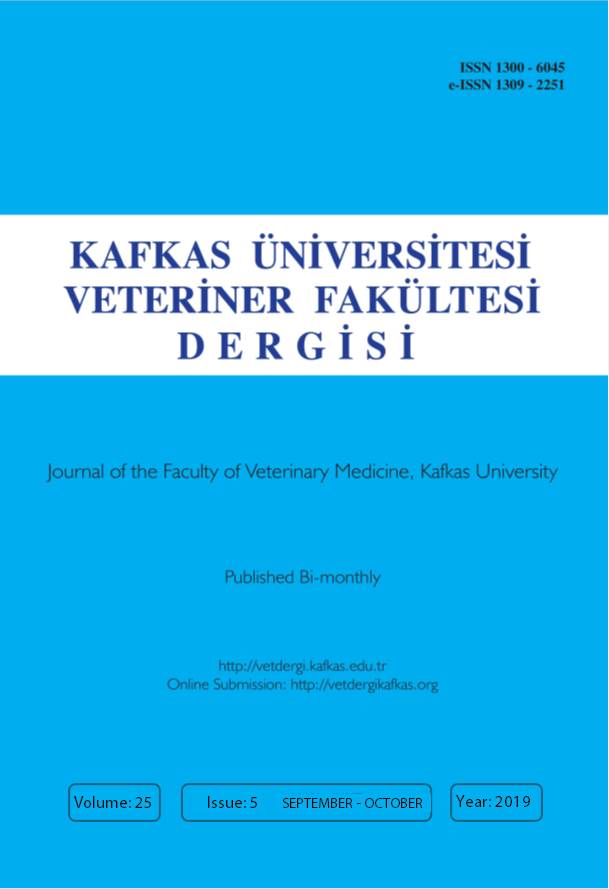
This journal is licensed under a Creative Commons Attribution-NonCommercial 4.0 International License
Kafkas Üniversitesi Veteriner Fakültesi Dergisi
2019 , Vol 25 , Issue 5
The First Case of Anal Myiasis Caused by Chrysomya albiceps (Wiedemann, 1819) in a Dog Infested with Rhiphicephalus sanguineus (Latreille, 1806) Ticks Suspected to Cause Paralysis in Turkey
1Department of Parasitology, Faculty of Veterinary Medicine, University of Selcuk, TR-42250 Konya - TURKEY2Department of Internal Medicine, Faculty of Veterinary Medicine, University of Selcuk, TR-42250 Konya - TURKEY DOI : 10.9775/kvfd.2018.21609 A four-year-old Kangal dog with hundreds of ixodid ticks in the head and neck regions and a large number of myiasis larvae in the anal region were brought to Selcuk University, Faculty of Veterinary Medicine, Department of Internal Medicine. A paralysis covering the anterior and posterior extremites, except the head region was determined in the dog. It was suspected that the paralysis was caused by ticks on the dog after elimination of some other disease. However, no definitive diagnosis was made for paralysis. Collected ticks were identified as Rhiphicephalus sanguineus (Latreille, 1806). The myiasis larvae collected from the anal region were identified as second and third instars of Chrysomya albiceps (Wiedemann, 1819). As a result, it is suggested that C. albiceps and Rh. sanguineus should be considered in the etiology of myiasis and tick paralysis cases, respectively. Keywords : Rhiphicephalus sanguineus, Calliphoridae, Chrysomya, Paralysis, Myiasis










